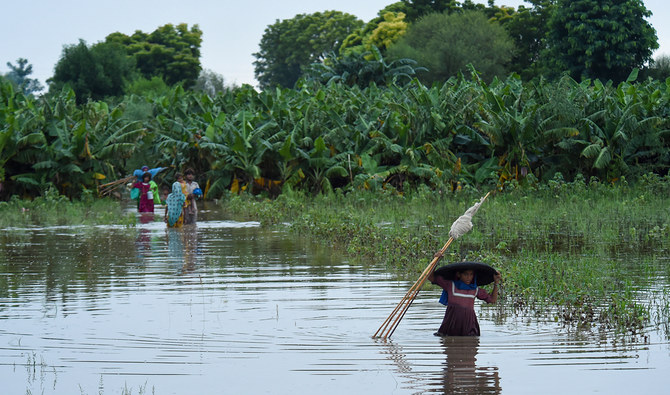
Growers and officials believe about 45 percent of cotton crop has also been flooded
By Khurshid Ahmed
KARACHI
Officials and agriculturalists in Pakistan have warned the country was likely to experience a food crisis at the end of the monsoon season after rains and floods damaged summer crops, including rice and cotton, while posing a threat to wheat sowing in the coming months.
According to official statistics, torrential rains have claimed 937 lives in Pakistan since the beginning of monsoon in June and devastated much of the agricultural land of the country.
“Rains and floods have destroyed cotton, rice, banana, and onion crops along with other vegetables,” Ghulam Sarwar Panhwar, member of Sindh Chamber of Agriculture, told.
“Our initial estimates suggest that the monetary losses to the agriculture sector have far exceeded Rs500 billion in Sindh alone,” he continued. “The situation has also posed serious threat to the country’s food security.”
Panhwar said much of the agricultural lands in the province was submerged in deep water, adding it would take about three to four months to completely drain it out.
“The government should take measures to drain this water on a war footing since we will only be able to sow the next wheat crop after that,” he said. “The rice crop damage and uncertainty surrounding wheat sowing are potential threats to Pakistan’s food security.”
While it is difficult to estimate the extent of damage to the crops due to the rains and floods at this stage, growers and officials believe that about 45 percent of cotton has also been flooded.
“We estimate that around 40 to 45 percent of the cotton crop has been damaged by flash floods,” Chaudhry Khalid Rafique, vice chairman of the Pakistan Cotton Ginners’ Association (PCGA), told Arab News. “We are in the process of collecting crop damage data from the affected areas as crops in some districts have completely wiped out.”
The PCGA, which releases the production numbers of cotton, is likely to mention the exact amount of damage in its output report next month.
However, the official figures shared by the authorities in Punjab show that cotton was sown on 3,670,000 acres out of which 150,000 acres of land has been damaged in the province.
“We have sought data from Sindh and Balochistan authorities to assess the damages caused by recent floods,” Gul Hasan, director of Pakistan Central Cotton Committee which works under the Ministry of National Food Security and Research, told Arab News. “The meeting to assess the exact damage is expected in the first week of the next month.”
While the damage to the crop in Sindh is yet to be quantified, growers said cotton fields were largely destroyed in major production centers of the province.
Pakistan’s textile millers said the damages to local cotton production would further increase import pressure this year.
“The country may need to import more cotton than last year,” Asif Inam, spokesperson of All Pakistan Textile Mills Association, told Arab News. “It will be additional burden on our import bill, but Pakistan may need to procure two million cotton bales from abroad after these floods.”
The country witnessed a 23.5 percent increase in the import of cotton during the last fiscal year which amounted to $1.8 billion.
Analysts said the supply of cotton in the local market was likely to fall by about 32 percent after the recent crop damage, adding it would further increase the commodity rate.
“The government had estimated an output of 11 million cotton bales this year,” Naseem Usman Osawala, a cotton broker, told Arab News. “However, it is now expected to be somewhere around 7.5 million bales. The shortage will need to be bridged through imports.”
“The spot rates [of cotton] are continuously rising in local and international markets,” he continued.
Apart from the agricultural damages, the country’s livestock sector has also suffered during the monsoon season, including a loss of 9,197 animals and related infrastructure worth Rs6.4 billion in Sindh alone, said Dr. Nazeer Hussain Kalhoro of the provincial livestock department.
___________________
Courtesy: Arab News